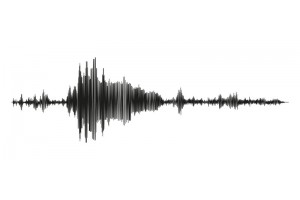What is a Contact Microphone?
What is a Contact Microphone?
Microphones are transducers; this means they change one form of energy into another. Microphones change acoustic energy into electrical energy.
The most common microphone, one that is used by broadcast companies and vocalists, change vibrations in the air, the sound that we hear, into electrical energy that can then be amplified or recorded.
Contact microphones also change sound vibrations into electrical energy but rather than use the vibrations in the air, contact microphones use the vibrations in a sold or near solid object, usually a soundboard.
Acoustic instruments have been designed to vibrate, this produces both the character of the sound and the volume of sound. Most acoustic instruments have some form of soundboard which performs most but not all of this. In a harp it is easy to see the sound board, the strings go through it, and it vibrates vigorously at every pluck of the string.
A contact microphone picks up these vibrations and converts them to electrical signals. There are different types of contact microphone, some are small round hard devices, usually made of ceramic. The ceramic crystal used is a special type of ceramic cut in a particular way so that when it is bent, there is an electrical voltage created between two of the sides. The ability to create an output voltage due to bending is the Piezo effect. Sometimes these devices are call Piezo pickups. These devices must be made very carefully as ceramic can have a very sharp resonant response, meaning that it creates a very large output for some particular frequencies and a much lower output for others.
Accusound use a Piezo Plastic for their pickups. This is a plastic material that, when bent or compressed, gives out an electrical signal. Due to the soft material from which these are made, there tends to be no resonant peak and the device can often work from extremely low frequencies to well beyond the upper range of human hearing.
This all sounds great, however when a soundboard vibrates it too has resonances, usually carefully designed to enhance the instrument, but it does mean that any pickup must carefully and accurately pickup all these resonances or it may lose some of the character of the instrument. For this reason, the Accusound pickup is about 150mm long which, although does not cover the whole soundboard, it does help to even out many resonances. We are working on a version of this traditional device that is much smaller but performs equally well.
As is common with just about all pickups, the device will not work directly into an amplifier, it must first be matched and/or amplifier to get a good quality signal. For this reason, many contact pickups and other types of pickup, require a power supply. This can be provided by a battery in a preamplifier or by phantom power, (see one of my other articles to learn about phantom power). Most Piezo Ceramic devices do not require amplification, but they often require a very high impedance amplifier input or high impedance preamplifier, both of which are easily obtained.
One advantageous side effect of a contact microphone is the relative immunity to feedback. Actually, no acoustic pickup is immune to feedback if used in a live situation, but because the pickup relies on vibrations of a mechanical structure, i.e. the soundboard, there is a very much higher level of amplified sound required before the soundboard is vibrated sufficiently to be close to the same level of the initially played instrument. (Again, see another of my articles to learn more about feedback and how it is created.) Standard microphones that use air vibrations, are more susceptible to feedback because only the mass of the air needs to vibrate which is much easier, especially as loudspeakers are made to vibrate the air to achieve their high sound levels.
As a final word, contact microphones are not always a direct alternative to the more standard microphone, but in some situations, they are a much better option, particularly when amplifying a harp, lever or pedal.


